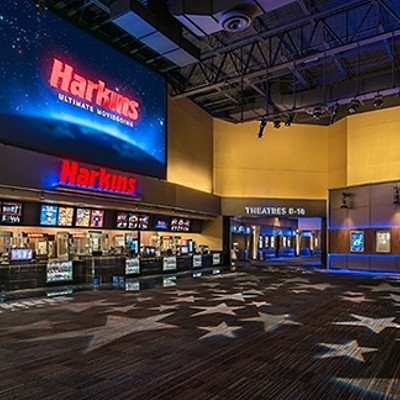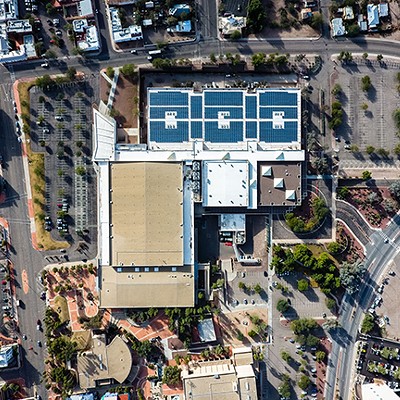Sitting in the living room of his cozy little 1920s home a few blocks south of Broadway Boulevard and Park Avenue, Ted Warmbrand looks out over the future construction site. At places, the existing wash is natural and heavily vegetated with desert and non-native plants; at other spots, human intrusions of concrete and trash are obvious.
Having lived in the diverse neighborhood since 1980, Warmbrand expresses great misgivings about the proposed series of five flood control basins, which will temporarily hold water after major storms.
"This project looked at the consequences of flooding, but lots of other consequences follow that," he says. Believing implementation of the detention basin proposal is a bigger threat to his neighborhood than Aviation Parkway was in the 1980s, he adds: "We're a small, safe, modest neighborhood near downtown where familiarity with your neighbors and surroundings has value. But this is basically a real estate project, to make the wash more pleasing to the eye.
"You could still be poor and own a home here," Warmbrand says proudly of his neighborhood's past, "but now, its becoming unaffordable. I wonder if my '81 Chevy will still be good enough for the neighborhood after the project is finished.
"There is nothing good in it for this neighborhood," Warmbrand continues, pointing out that his house isn't even in a flood-prone area since it is elevated well above the existing wash. "It's just for developers, as an attractive entrance to downtown, and for (helping) those downstream from us. But no neighborhood should be sacrificed for another."
The 42-acre Arroyo Chico proposal, which stretches almost one mile west from Kino Boulevard to Park Avenue, was first conceived of about a decade ago. It was to be a follow-up phase to the award-winning series of detention basins implemented on the Dell Urich golf course in Randolph Park.
As now planned, the basin project will include the reconstruction of the athletic facilities at Tucson High School's Cherry Field along with new pedestrian and bicycle trails. It may also eventually link with the vegetation-lined section of Arroyo Chico near Tucson Boulevard, allowing for an even longer inner-city greenway.
While mass grading along the wash west of Kino Boulevard is required to form the detention basins, one of the highlights of the effort will be an extensive native plant restoration program. Brooks Keenan, project manager for the city of Tucson, describes this feature: "To a passer-by, it will look like a lot of native plants with more density than usual," he says. "In some thickets, it won't be comfortable to walk through."
Diminishing downtown flooding hazards while eliminating the need for 1,400 homes and businesses from having to purchase flood insurance has always been the publicly stated goal of the project. Another unspoken justification is to reduce the cost of flood-control measures required to protect the downtown leg of the long-planned last mile of the Barraza-Aviation Parkway.
"The project will take the downtown mile of the parkway out of the floodplain," confirms Keenan. "That will reduce the cost of flood work (for the parkway)."
In addition to the changes he thinks the project will bring to his small neighborhood, Warmbrand also fears the impacts from 18 months of construction. Even though assurances have been given that air quality will be monitored and governmental standards adhered to, he still has reservations about Corps of Engineers oversight of the construction.
"The dust levels must be kept low to protect people's health," he says, "and our quality of life not diminished during construction. (If that's not done), the stresses will be quite enormous."
Warmbrand is especially critical of how city of Tucson staff has worked with the public on the project. "I don't believe they care about us," he says. "They care more about property values than people. It's hard to have faith in what they say they are going to do. I don't trust them."
Answering that criticism, Keenan points to the city's reply to a list of 18 design and management recommendations from the Citizen Advisory Committee appointed for the project. "I believe our response to the 18 points shows outstanding cooperation on the part of city staff," he says.
Despite the advisory committee being disbanded last year, Warmbrand and his wife, Jacky Turchick, recently asked the City Council to reinstate the group. That will be done, says Keenan, with a CAC meeting to be held shortly to review final plans and bid specifications for the project. After that, a general public meeting will be scheduled once a firm construction date has been established.
From her perspective, Turchick is more optimistic about the detention basin project. "If, in fact, the government does what is planned," she says "it will be the best we could have come up with without stopping the project. We'll still have to hold their feet to the fire on saving as many old growth trees as possible. It's been a long battle, but we've done well for ourselves."












